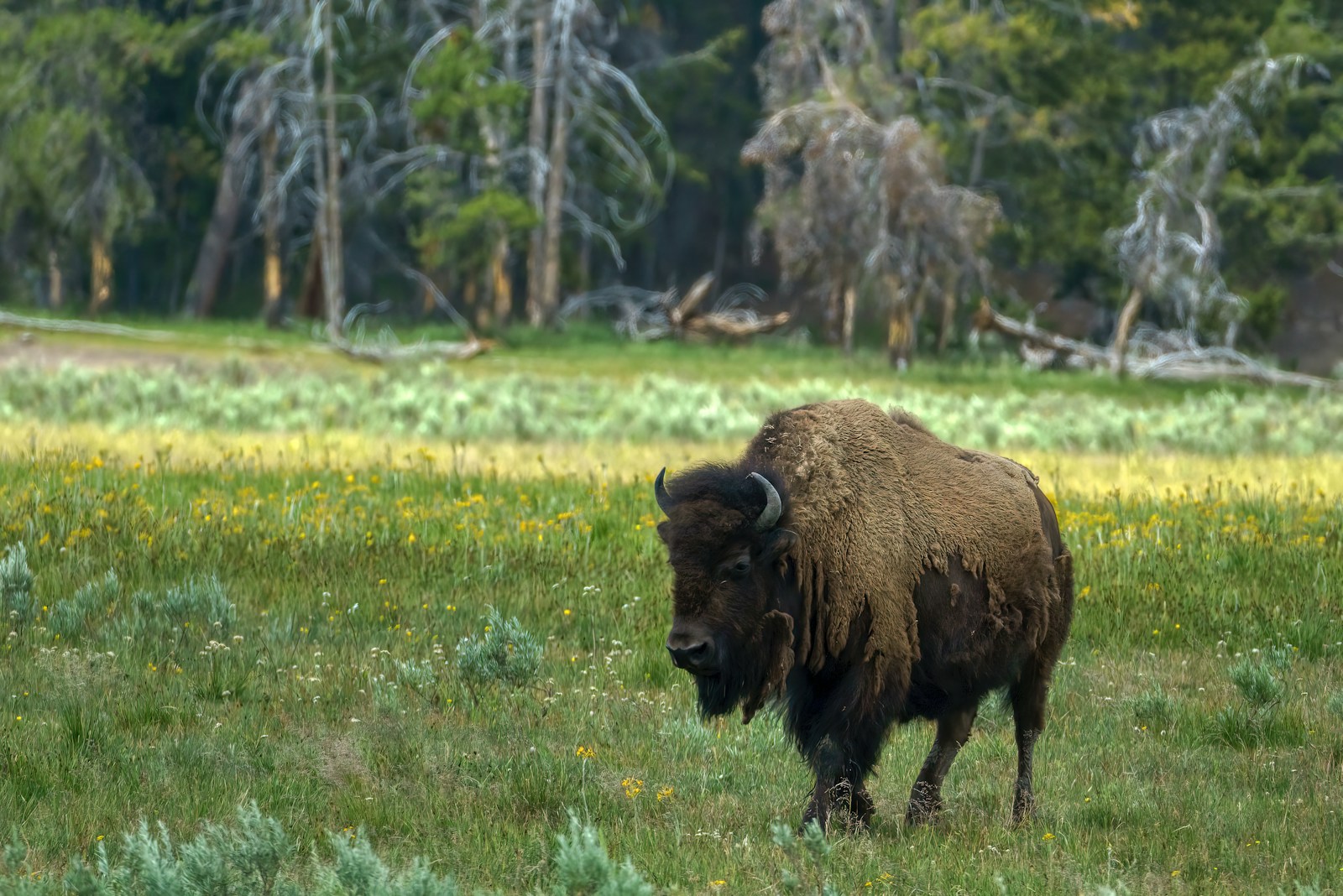The American bison, majestic giants that once thundered across the Great Plains in herds numbering millions, were far more than just animals to the indigenous peoples of North America. These magnificent creatures represented the lifeblood of numerous Native American tribes, fundamentally shaping their spiritual beliefs, economic systems, social structures, and daily existence. The relationship between Native Americans and bison transcended mere survival; it embodied a sacred covenant, a profound interconnection between people and the natural world that defined tribal identities for thousands of years. From the Blackfeet to the Lakota, from the Comanche to the Crow, bison influenced every aspect of Native cultures, creating a lasting legacy that continues to resonate in indigenous communities today despite the near-extinction of these iconic animals in the late 19th century.
The Sacred Relationship: Bison in Native American Spirituality
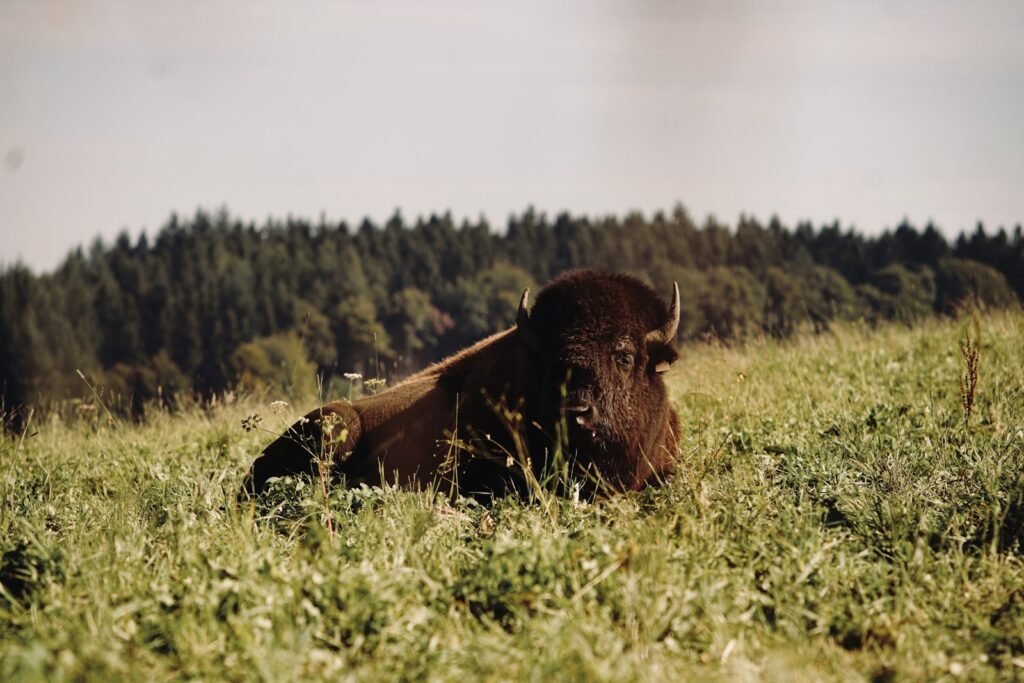
For countless Native American tribes, particularly those of the Great Plains, the bison held a central position in spiritual cosmology and religious practice. Many origin stories feature the bison as divine gifts from the Creator, sent specifically to sustain human life. The White Buffalo Calf Woman, a sacred figure in Lakota tradition, brought the sacred pipe and essential teachings while establishing the spiritual connection between the Lakota people and bison. Ceremonial objects made from bison parts—skulls, hides, and horns—featured prominently in religious rituals, creating physical connections to the spiritual power these animals embodied. The Sun Dance, one of the most significant ceremonies among Plains tribes, often incorporated bison symbolism and parts, demonstrating how deeply these animals were woven into the spiritual fabric of Native American life.
The Foundation of Survival: Bison as Economic Resource
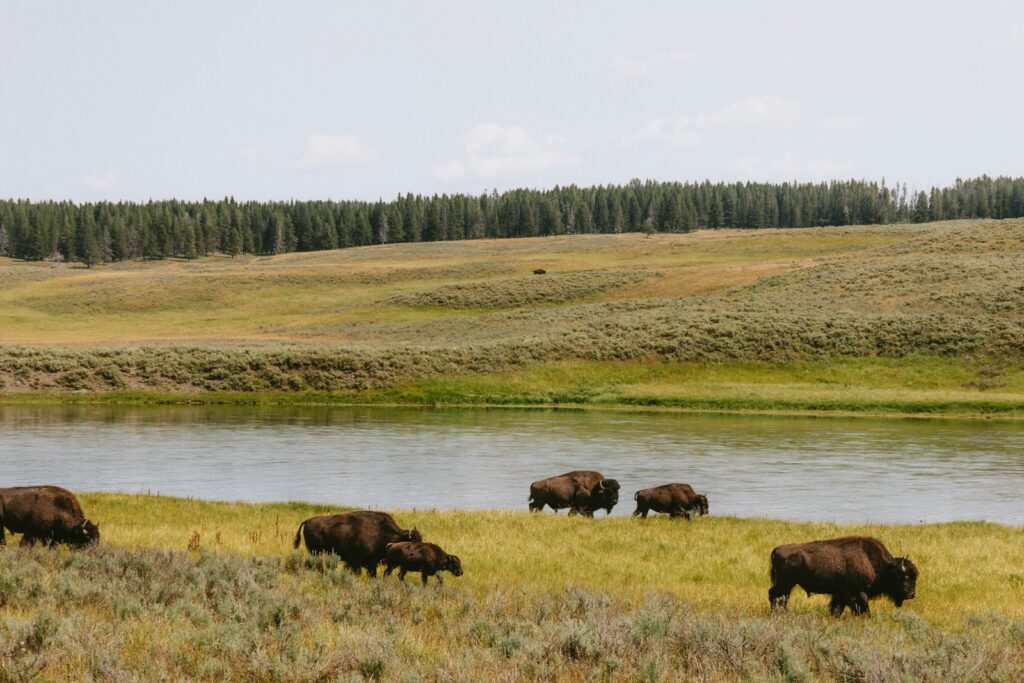
Bison represented the cornerstone of economic systems for Plains tribes, providing virtually everything needed for physical survival. A single bison could yield up to 800 pounds of meat, supplying a family for months with protein-rich nutrition crucial for survival in harsh prairie environments. Beyond meat, these animals provided hides for tipis, blankets, and clothing; bones for tools and utensils; sinew for thread and bowstrings; and stomachs for water containers. The economic importance of bison created specialized roles within tribal societies, with skilled hunters and hide-workers gaining status through their expertise in utilizing this essential resource. This comprehensive dependence on bison meant that tribal movements, seasonal patterns, and economic decisions revolved primarily around following the massive herds across the landscape.
Cultural Identity: How Bison Shaped Tribal Social Structures
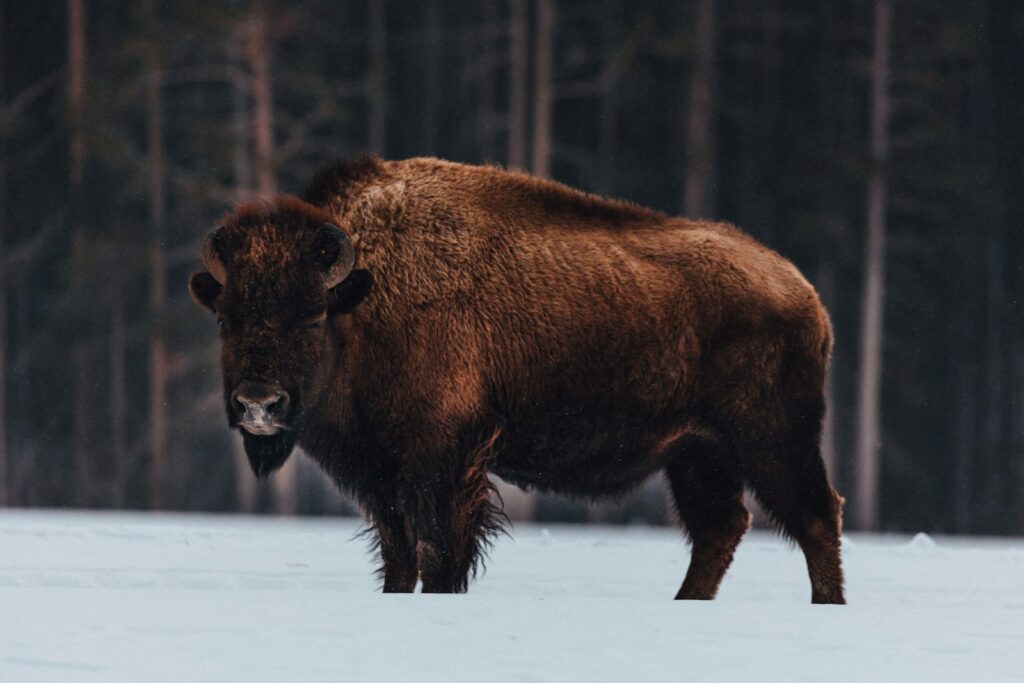
The presence of bison profoundly influenced social organization and cultural identity among Native American tribes. Hunting such massive animals required sophisticated coordination and cooperation, leading to the development of complex hunting societies with distinct hierarchies, roles, and responsibilities. The communal buffalo hunt became a defining cultural practice, with elaborate preparations including scouting, ceremonial rituals, and strategic planning that reinforced social bonds. Success in hunting bison determined social standing within many tribes, with skilled hunters gaining prestige, leadership positions, and marriage opportunities based on their abilities. For many Plains peoples, cultural identity became inextricably linked to their relationship with bison, reflected in tribal names, clan systems, and creation stories that explicitly connected human identity to these animals.
The Art of the Hunt: Traditional Bison Hunting Techniques
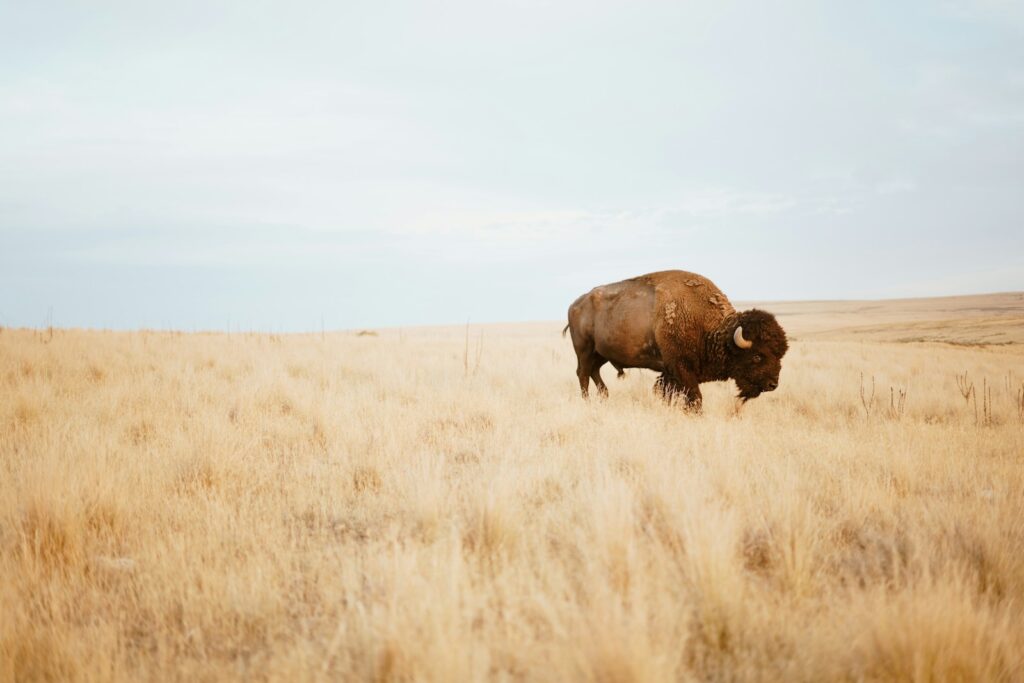
Native Americans developed sophisticated hunting strategies specifically adapted to bison behavior and the challenging prairie environment. Before horses arrived with European contact, tribes employed remarkable communal hunting methods such as the buffalo jump, where coordinated groups would strategically drive herds toward cliffs where the animals would fall to their deaths. The introduction of horses in the 17th century revolutionized bison hunting, creating the iconic mounted pursuits where skilled riders would race alongside thundering herds to select and bring down individual animals with bows and spears. Regardless of method, bison hunting required intimate knowledge of animal behavior, weather patterns, and geography, representing not just a food-gathering activity but a complex cultural practice embedding traditional ecological knowledge. These hunts were preceded by extensive spiritual preparations, including prayers, purification rituals, and ceremonies to show respect to the bison and ensure successful outcomes.
Material Culture: Bison in Native American Crafts and Technologies
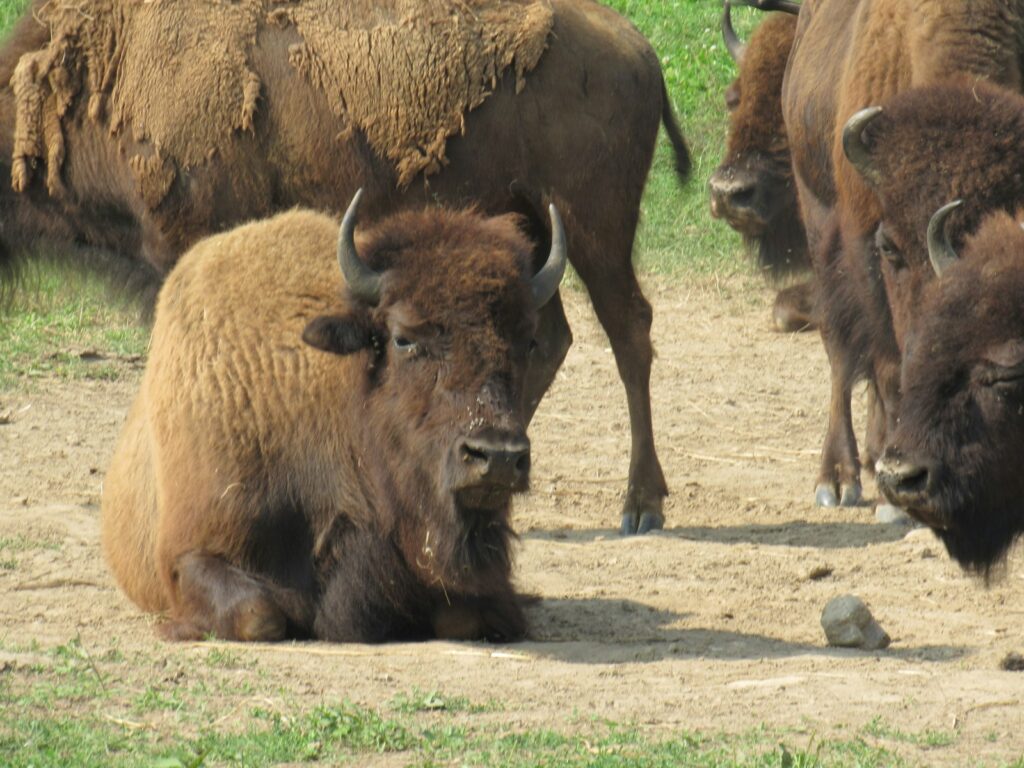
The remarkable versatility of bison materials sparked technological innovation and artistic expression across Native American societies. Every part of the animal found purpose in indigenous material culture—hides became canvases for painted records of tribal histories and personal achievements, with distinctive artistic styles developing around this medium. The bones, particularly shoulder blades, were transformed into sophisticated tools including hoes for agriculture, awls for leatherworking, and sleds for transportation. Women developed specialized techniques for processing hides into supple leather through labor-intensive smoking and tanning processes, creating materials prized for their durability and beauty. Intricate beadwork, quillwork, and painting on bison-derived materials showcased tribal aesthetic traditions while often depicting the very animals that provided the materials, creating a circular relationship between art, culture, and resource.
Living Architecture: Bison’s Role in Housing and Shelter
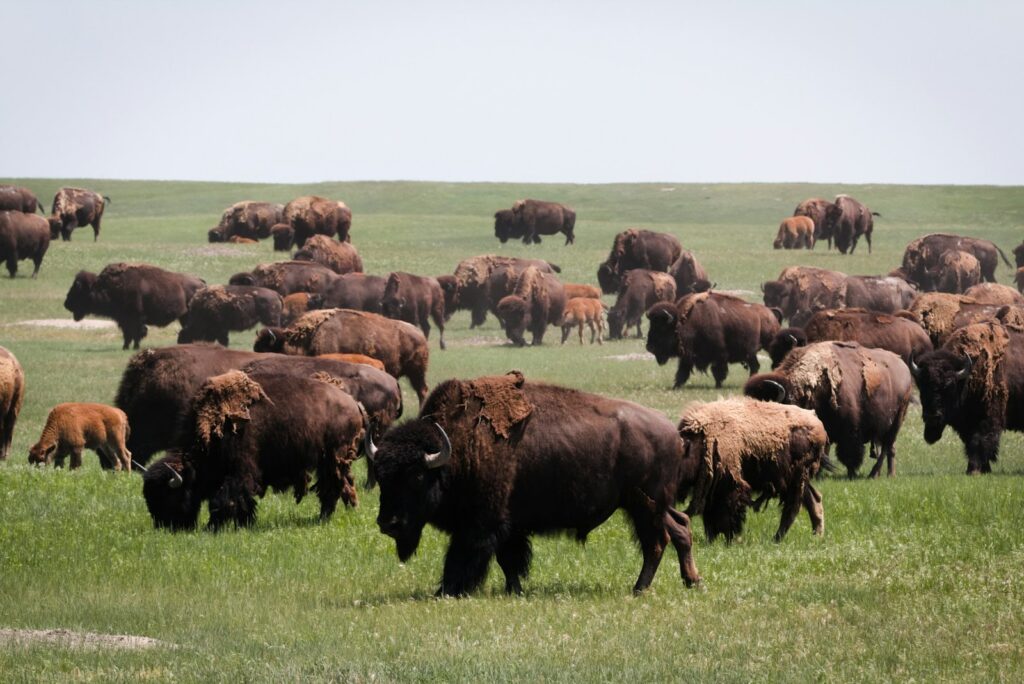
The iconic tipi, perhaps the most recognizable form of Native American architecture, owed its existence directly to the bison. A single tipi required 8-20 bison hides, carefully prepared and sewn together to create a practical dwelling perfectly adapted to the nomadic lifestyle necessary for following the herds. These remarkable structures could be assembled or disassembled in under an hour, transported easily during seasonal migrations, and modified to accommodate changing weather conditions through adjustable smoke flaps and liners. The waterproof, insulating properties of bison hides made tipis comfortable in both scorching summers and frigid winters, while their conical shape efficiently shed rain and snow while resisting the powerful winds of the plains. Inside these dwellings, additional bison products created domestic comfort—hides became sleeping mats and room dividers, while painted hides recorded family histories and spiritual visions on the interior walls.
Clothing and Adornment: Bison in Native American Fashion

Bison provided the primary materials for clothing across numerous tribes, with garments showcasing both practical ingenuity and aesthetic sophistication. Winter robes made from bison fur with the hair intact offered unparalleled protection against subzero temperatures, while summer clothing utilized hides tanned into soft leather that remained durable through months of constant wear. Ceremonial attire incorporated specialized parts of the bison, with horns becoming headdress components for warriors and spiritual leaders to symbolize power and connection to these revered animals. Women developed elaborate decorative techniques for bison-hide clothing, including porcupine quillwork, beading, and painting that transformed utilitarian garments into expressions of cultural identity and artistic skill. Even footwear relied on bison resources, with moccasins frequently crafted from the thicker hide of the bison’s neck, providing protection while maintaining flexibility for silent movement during hunting.
Sustenance and Culinary Traditions: Bison in Native American Diets
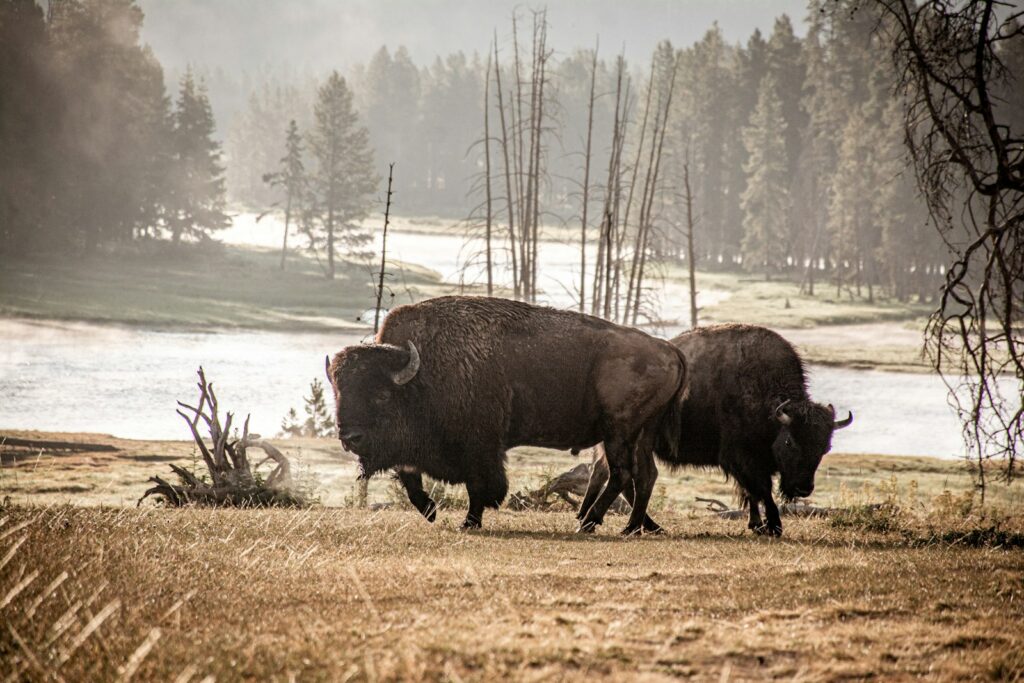
The nutritional relationship between Native Americans and bison extended far beyond simple consumption, developing into sophisticated culinary traditions that maximized the use of this essential resource. Tribes developed specialized preparation methods for different parts of the animal—the tongue and hump were considered delicacies, while other organs like the liver were often consumed raw immediately after a kill for their exceptional nutritional properties. Preservation techniques such as drying meat into pemmican—a concentrated mixture of dried meat, fat, and berries that could remain edible for years—enabled communities to maintain food security through lean seasons when hunting was difficult. Many tribes developed distinctive recipes for preparing various bison parts, with cooking methods including earth ovens, stone boiling, roasting, and smoking that enhanced flavors while preserving nutritional value. These culinary traditions reflected deep knowledge of nutrition, with different parts of the animal providing specific benefits—fat for essential calories, organ meats for vitamins, and muscle meat for protein.
Medicine and Healing: Bison in Traditional Health Practices
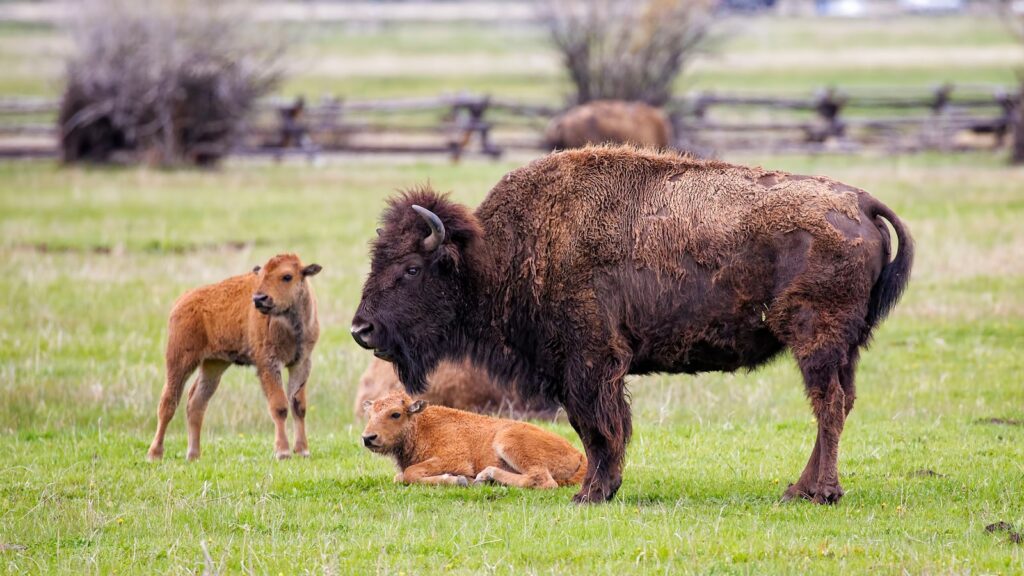
Across Native American healing traditions, bison contributed vital materials for both physical and spiritual medicine. The gallbladder and fat were processed into remedies for burns, frostbite, and skin conditions, with these treatments sometimes showing remarkable effectiveness due to natural compounds present in these materials. Spiritual healing often incorporated bison skulls as focal points for ceremonies, believed to channel the animal’s power and strength into healing rituals for the sick or injured. Bison hair was woven into special medicine bundles that held sacred objects used by healers, while specific parts like the tail might be used in smudging ceremonies intended to purify and heal. Traditional knowledge included using the bison’s bladder as a water container for medicinal teas and infusions, creating a complete healing system that integrated the animal’s contributions with plant-based medicines and spiritual practices.
Seasonal Cycles: Following the Bison Through the Year
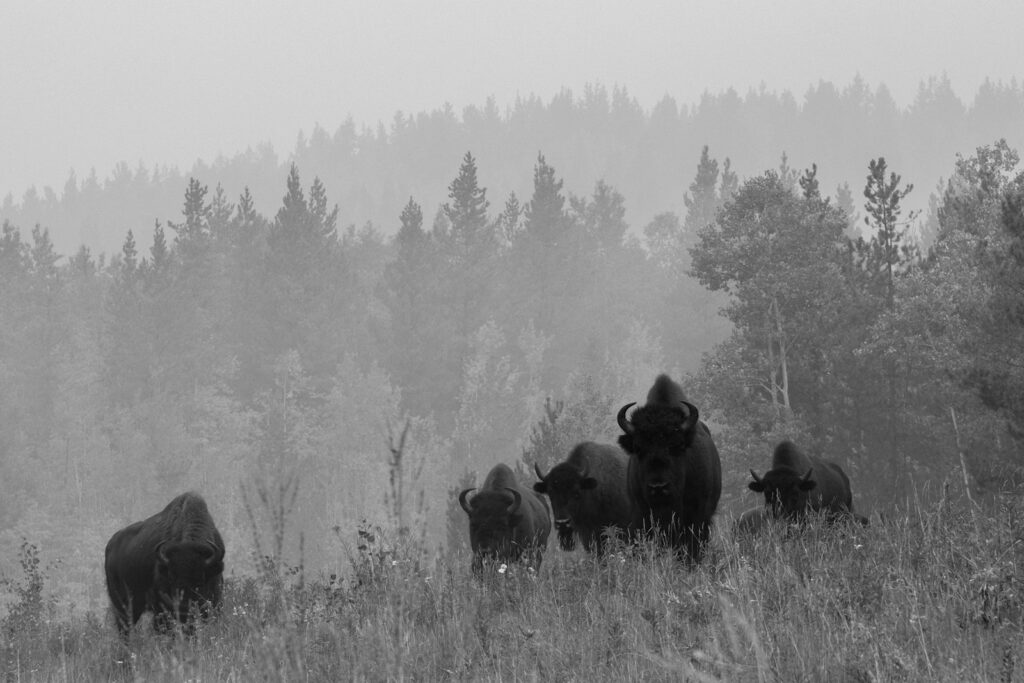
The migratory patterns of bison herds dictated the seasonal rhythms of many Native American communities, creating annual cycles that structured tribal life. Spring brought the calving season when new bison were born, a time of renewal that often aligned with important tribal ceremonies celebrating fertility and new beginnings. Summer typically featured the largest communal hunts when multiple bands would gather to coordinate major hunting efforts, followed by intensive processing periods where entire communities worked together to preserve meat and prepare hides. Fall hunting focused on building winter reserves and acquiring the thicker winter hides necessary for cold-weather clothing and shelter. Winter months, when hunting became more difficult, became periods for storytelling, craft production using stored bison materials, and passing down traditional knowledge about the sacred relationship between people and bison to younger generations.
The Devastating Impact of Bison Destruction
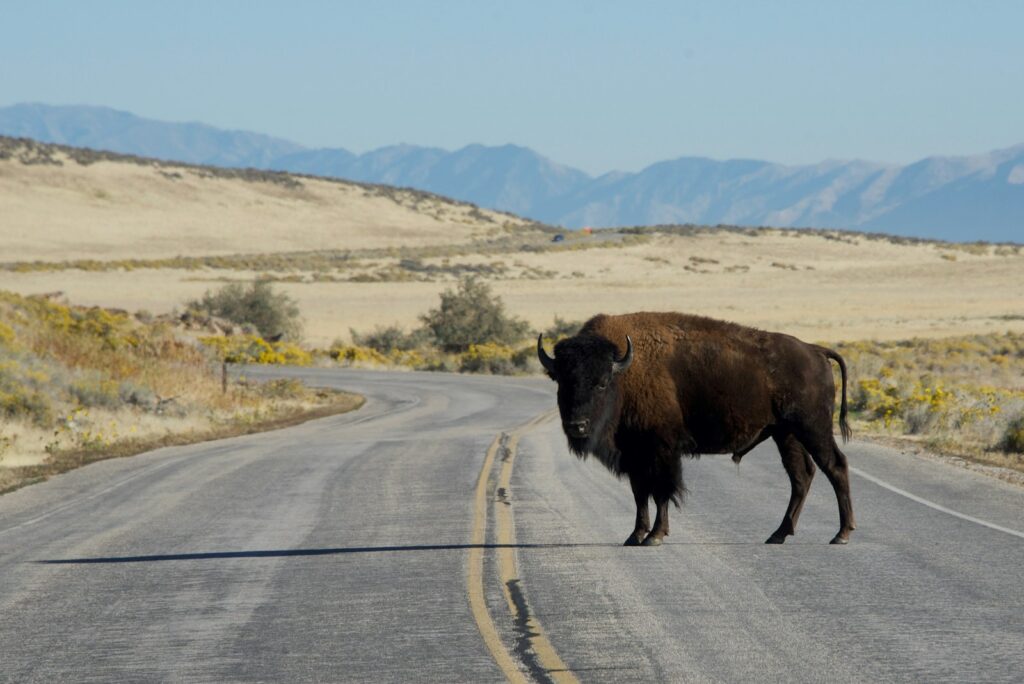
The systematic destruction of bison herds in the 19th century—driven by commercial hunting, sport shooting from railroads, and deliberate policy to undermine Native American resistance—represents one of history’s most profound ecological and cultural catastrophes. From an estimated 30-60 million animals, bison numbers plummeted to fewer than 1,000 by 1889, effectively collapsing the foundation of Plains Indian cultures virtually overnight. This deliberate destruction forced formerly independent tribes onto reservations where traditional lifeways became impossible to maintain without access to their primary resource. The spiritual trauma of witnessing the near-extinction of an animal central to tribal identity and religious practice created profound cultural wounds that continue to affect communities today. This period of ecological devastation directly coincided with the most aggressive phases of forced assimilation policies, creating a dual assault on both the physical and cultural survival of Native peoples dependent on bison.
Cultural Resilience: Contemporary Efforts to Restore Bison and Traditions
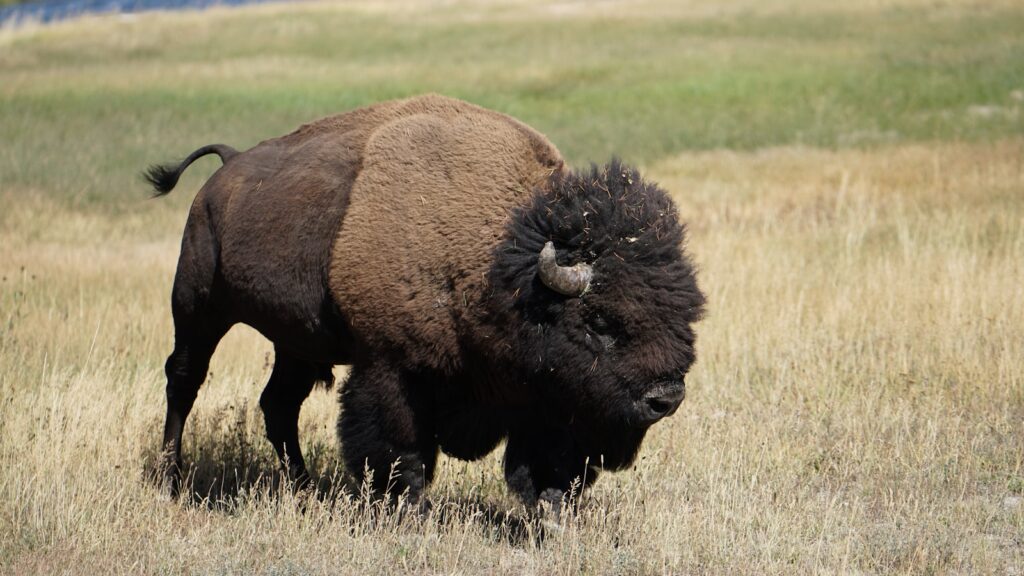
Despite the near-complete destruction of bison herds and subsequent cultural disruption, many Native American tribes have undertaken remarkable efforts to restore both the animals and their associated traditions. The InterTribal Buffalo Council, representing dozens of tribes, works to restore bison to tribal lands, with many reservations now maintaining growing herds that support cultural revitalization efforts. Contemporary Native communities host educational programs teaching younger generations traditional practices related to bison—from respectful hunting methods to hide processing techniques—ensuring ancient knowledge survives into the future. Modern tribal colleges often incorporate bison restoration into their curricula, combining traditional ecological knowledge with contemporary conservation science to rebuild sustainable relationships between communities and these culturally essential animals. These restoration efforts represent not just conservation but cultural healing, reconnecting tribal communities with the animal that defined their ancestors’ way of life for countless generations.
The profound relationship between Native Americans and bison represents one of history’s most significant examples of how a single species can shape human culture, spirituality, and survival. This interdependence created sophisticated societies perfectly adapted to their environment through deep ecological knowledge and spiritual reverence for the natural world. Though European colonization and westward expansion devastated both bison populations and Native communities, the cultural memory of this relationship has never disappeared. Today, as bison slowly recover through conservation efforts often led by tribal nations themselves, this ancient relationship continues to evolve. The story of Native Americans and bison reminds us of the deep connections possible between humans and wildlife—connections that transcend mere resource use to become defining elements of cultural identity, spiritual practice, and ecological wisdom that may yet have much to teach our modern world.

